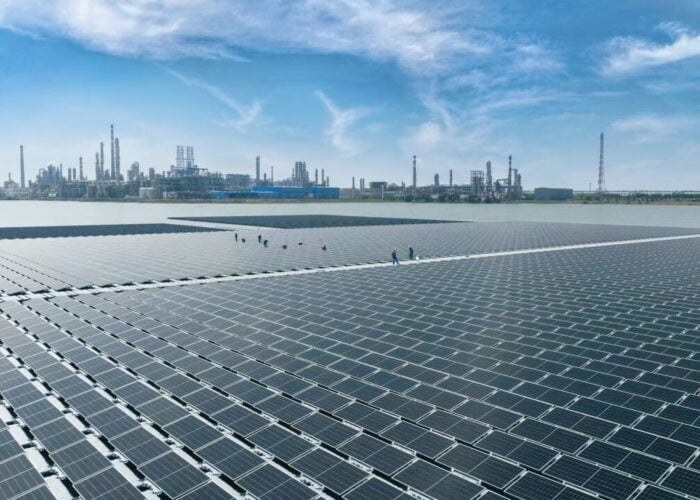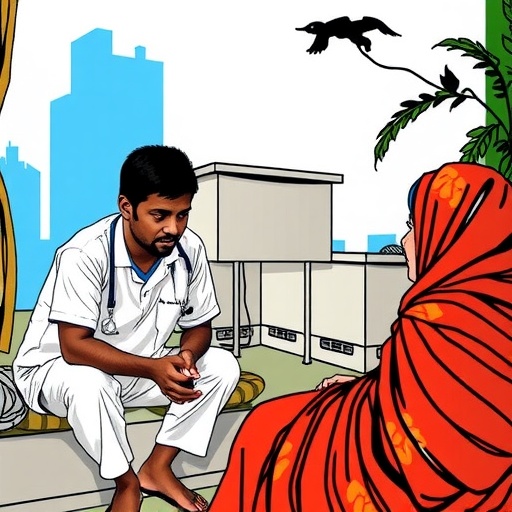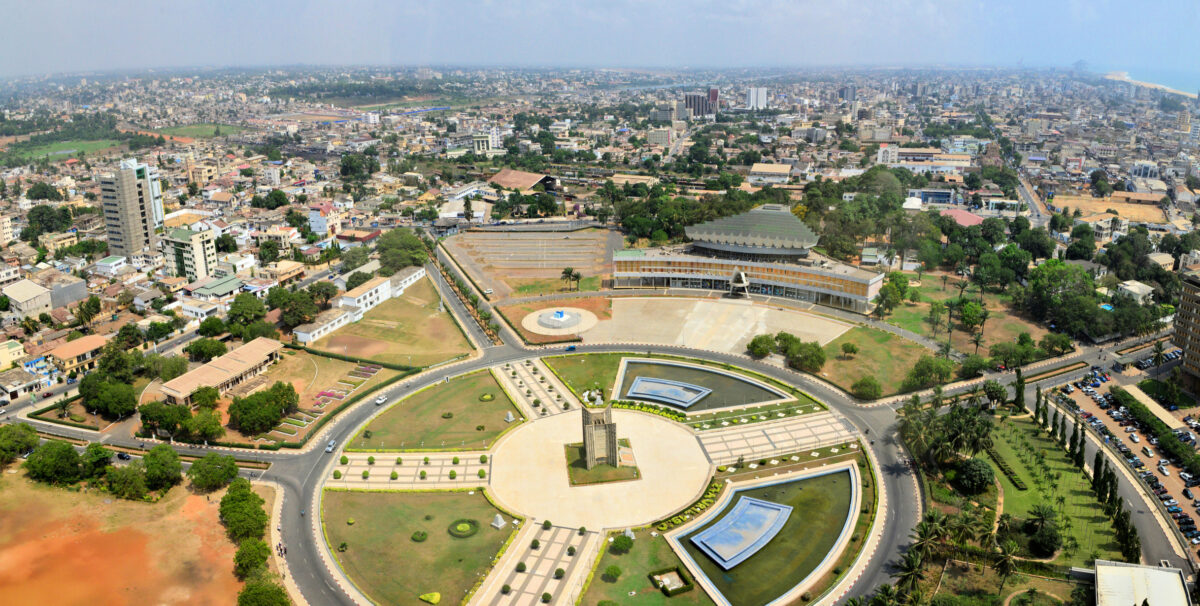Kyrgyzstan to Revolutionize Its Energy Sector with a Massive Solar Power Plant – Travel And Tour World

Report on the Kyrgyzstan Solar Power Initiative: A Strategic Alignment with Sustainable Development Goals
1.0 Executive Summary
The Kyrgyz Republic is embarking on a transformative energy project with the development of a 1.9 GW solar power plant in the Issyk-Kul Lake region, scheduled for completion by 2027. This initiative, undertaken in partnership with the Vietnamese company Rox Energy Global, represents a monumental step in modernizing the nation’s energy infrastructure. The project is strategically aligned with multiple United Nations Sustainable Development Goals (SDGs), primarily focusing on providing clean energy, fostering economic growth, taking climate action, and building resilient infrastructure through international partnerships. This report details the project’s features and analyzes its significant contributions to the 2030 Agenda for Sustainable Development.
2.0 Project Overview and Specifications
2.1 Key Project Details
- Project: Development and construction of a 1.9 GW solar power plant.
- Location: Issyk-Kul Lake region, selected for its high solar irradiance levels.
- Capacity: 1.9 GW, set to surpass the capacity of the nation’s largest existing facility, the Toktogul thermal power station.
- Timeline: The project is scheduled for completion and full operation by 2027.
- Key Partner: Rox Energy Global, a Vietnamese corporation providing technical expertise and resources.
3.0 Alignment with United Nations Sustainable Development Goals (SDGs)
The Kyrgyzstan solar project is a direct contributor to the achievement of several key SDGs, demonstrating the nation’s commitment to a sustainable and equitable future.
3.1 SDG 7: Affordable and Clean Energy
The project’s primary objective is to advance SDG 7 by fundamentally shifting Kyrgyzstan’s energy landscape towards renewable sources.
- Increasing Renewable Energy Share: The 1.9 GW plant will dramatically increase the proportion of clean energy in the national grid, reducing reliance on fossil fuels.
- Enhancing Energy Security: By diversifying the energy mix, the project mitigates risks associated with fluctuating water levels for hydropower and the volatility of imported fossil fuels, ensuring a more reliable and stable electricity supply.
3.2 SDG 13: Climate Action
This initiative is a cornerstone of Kyrgyzstan’s strategy to combat climate change and its impacts, directly addressing the targets of SDG 13.
- Reducing Greenhouse Gas Emissions: The transition from thermal power to solar energy will lead to a substantial reduction in the country’s carbon footprint.
- Building Resilience: It strengthens the resilience of the energy sector to climate-related hazards, such as droughts affecting hydropower capacity, by providing a dependable alternative power source.
3.3 SDG 8: Decent Work and Economic Growth
The solar plant is projected to stimulate sustainable economic growth and create employment opportunities, in line with SDG 8.
- Job Creation: The construction phase will generate a significant number of jobs for technical and manual labor.
- Long-Term Employment: Post-completion, the plant will require a skilled workforce for ongoing operations, maintenance, and management, fostering sustained employment in the green energy sector.
3.4 SDG 9: Industry, Innovation, and Infrastructure
The project represents a significant investment in building resilient, sustainable, and innovative infrastructure, a core component of SDG 9.
- Infrastructure Modernization: It involves the construction of state-of-the-art energy infrastructure that is both sustainable and capable of meeting future demands.
- Promotion of Clean Technology: The project facilitates the adoption of advanced solar technology, positioning Kyrgyzstan as a regional hub for renewable energy innovation.
3.5 SDG 17: Partnerships for the Goals
The collaboration between the Kyrgyz government and Rox Energy Global exemplifies the spirit of SDG 17, which emphasizes the importance of global partnerships for sustainable development.
- Public-Private Partnership: This initiative showcases an effective model of collaboration between a national government and an international private sector entity.
- Technology Transfer and Knowledge Sharing: The partnership facilitates the transfer of essential financial resources, technology, and expertise required to realize a large-scale renewable energy project.
4.0 Conclusion: A Pathway to a Sustainable Future
The Kyrgyzstan solar project is more than an infrastructure development; it is a strategic initiative that comprehensively addresses critical sustainable development challenges. By significantly boosting its renewable energy capacity, Kyrgyzstan is not only enhancing its energy security but also making tangible progress on its commitments to climate action, economic development, and global partnerships. This project positions the nation as a leader in the renewable energy transition in Central Asia and serves as a powerful example of how targeted investments can accelerate progress towards the Sustainable Development Goals.
Analysis of SDGs in the Article
1. Which SDGs are addressed or connected to the issues highlighted in the article?
- SDG 7: Affordable and Clean Energy: The article’s central theme is the construction of a 1.9 GW solar power plant to increase renewable energy capacity and provide a stable electricity source.
- SDG 8: Decent Work and Economic Growth: The project is expected to have a positive economic impact by creating jobs during both construction and operation phases.
- SDG 9: Industry, Innovation and Infrastructure: The solar plant represents a significant upgrade to Kyrgyzstan’s national energy infrastructure, making it more modern, sustainable, and resilient.
- SDG 13: Climate Action: The initiative is explicitly linked to combating climate change, reducing carbon emissions, and meeting international climate commitments by shifting away from fossil fuels.
- SDG 17: Partnerships for the Goals: The project is a result of international collaboration between the Kyrgyz government and a Vietnamese company, Rox Energy Global, highlighting a partnership for sustainable development.
2. What specific targets under those SDGs can be identified based on the article’s content?
- Target 7.2: By 2030, increase substantially the share of renewable energy in the global energy mix. The article directly supports this by stating the project will “significantly increase the country’s renewable energy capacity” and “play a significant role in enhancing the country’s renewable energy mix.”
- Target 7.a: By 2030, enhance international cooperation to facilitate access to clean energy research and technology… and promote investment in energy infrastructure and clean energy technology. The partnership with “Rox Energy Global, a Vietnamese company with extensive expertise in solar energy,” exemplifies this target.
- Target 8.5: By 2030, achieve full and productive employment and decent work for all. The article mentions that “The construction phase of the project will generate thousands of jobs” and will offer “ongoing employment opportunities.”
- Target 9.1: Develop quality, reliable, sustainable and resilient infrastructure. The project aims to create a “more sustainable and resilient energy grid” and reduce “vulnerability to power outages.”
- Target 9.4: By 2030, upgrade infrastructure and retrofit industries to make them sustainable… with greater adoption of clean and environmentally sound technologies. The solar plant is a direct upgrade of energy infrastructure using clean technology to reduce reliance on “traditional power sources like coal and natural gas.”
- Target 13.2: Integrate climate change measures into national policies, strategies and planning. The project is described as being in line with “the government’s long-term strategy to meet international climate commitments” and part of a “broader effort to modernize the country’s energy infrastructure and make it more sustainable.”
- Target 17.6: Enhance North-South, South-South and triangular regional and international cooperation on and access to science, technology and innovation. The collaboration between Kyrgyzstan and the Vietnamese company Rox Energy Global is a direct example of South-South cooperation to transfer technology and expertise.
3. Are there any indicators mentioned or implied in the article that can be used to measure progress towards the identified targets?
- Indicator for Target 7.2 (Renewable energy share): The article provides a specific metric for the increase in renewable energy capacity: the construction of a “massive 1.9 GW solar power plant.” This capacity figure is a direct indicator of progress.
- Indicator for Target 8.5 (Employment): The article implies a measure of job creation by stating the project will “generate thousands of jobs” in construction and provide “ongoing employment opportunities” once operational.
- Indicator for Target 9.1 & 7.1 (Reliable Infrastructure): An implied indicator is the reduction of energy shortages and power outages. The article notes the plant will “reduce its vulnerability to energy shortages, particularly during the summer months when hydropower production can decline.”
- Indicator for Target 13.2 (Climate Action): A key implied indicator is the reduction of fossil fuel dependency and carbon emissions. The article states the project is part of Kyrgyzstan’s efforts to “reduce its reliance on fossil fuels” and is “working towards lowering its carbon emissions.”
- Indicator for Target 17.6 (Partnerships): The existence of the partnership itself is an indicator. The article identifies the specific partners: “the Kyrgyz government has partnered with Rox Energy Global, a Vietnamese company.”
4. Summary of SDGs, Targets, and Indicators
| SDGs | Targets | Indicators Identified in the Article |
|---|---|---|
| SDG 7: Affordable and Clean Energy | 7.2: Increase the share of renewable energy. 7.a: Enhance international cooperation for clean energy. |
– Addition of 1.9 GW of solar power capacity. – Partnership with a foreign company (Rox Energy Global) for technology and expertise. |
| SDG 8: Decent Work and Economic Growth | 8.5: Achieve full and productive employment. | – Creation of “thousands of jobs” in construction. – Provision of “ongoing employment opportunities.” |
| SDG 9: Industry, Innovation and Infrastructure | 9.1: Develop quality, reliable, sustainable and resilient infrastructure. 9.4: Upgrade infrastructure to make it sustainable. |
– Construction of a modern solar plant to create a “resilient energy grid.” – Diversification from hydropower and fossil fuels to reduce vulnerability to outages. |
| SDG 13: Climate Action | 13.2: Integrate climate change measures into national policies. | – Project aligns with the government’s strategy to meet “international climate commitments.” – Reduction in reliance on fossil fuels, leading to “lowering its carbon emissions.” |
| SDG 17: Partnerships for the Goals | 17.6: Enhance international cooperation on science, technology, and innovation. | – Formal partnership between the Kyrgyz government and Rox Energy Global of Vietnam. |
Source: travelandtourworld.com

What is Your Reaction?
 Like
0
Like
0
 Dislike
0
Dislike
0
 Love
0
Love
0
 Funny
0
Funny
0
 Angry
0
Angry
0
 Sad
0
Sad
0
 Wow
0
Wow
0


-1920w.png?#)





































































